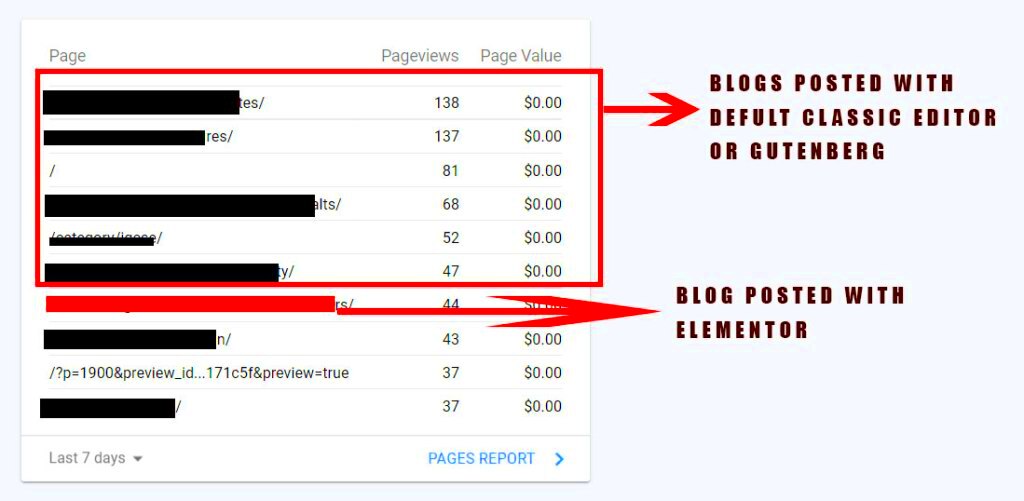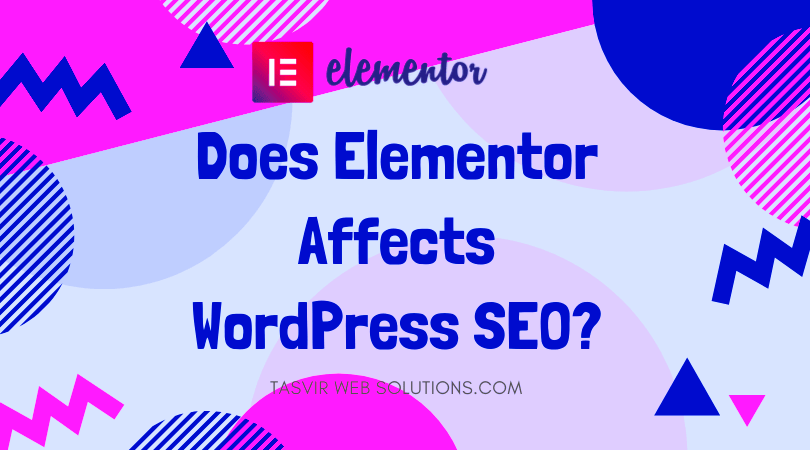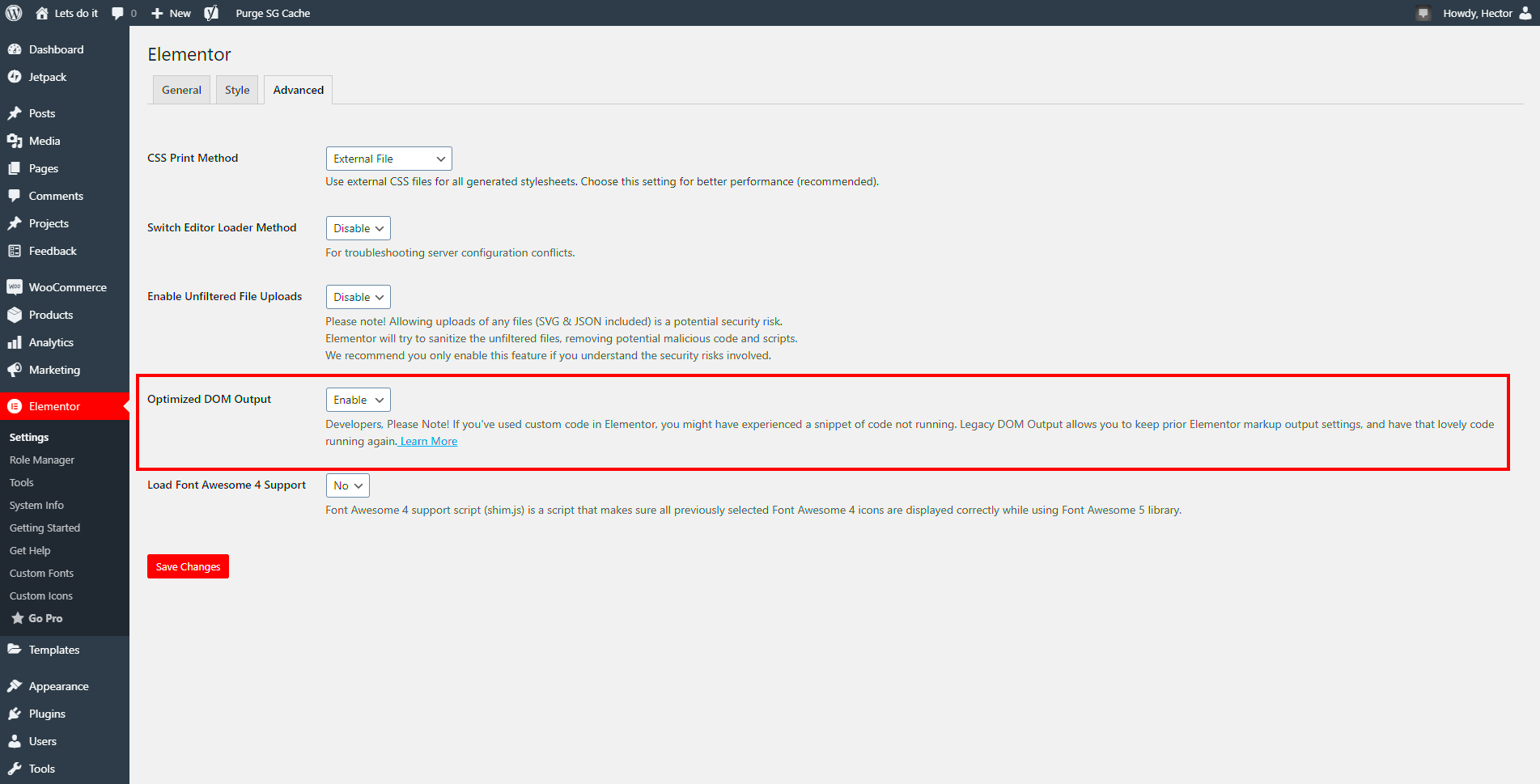When building websites with Elementor, many of us often wonder how the structure of our pages—which includes the number of Elementor containers—could influence our SEO performance. It’s a valid concern since the layout can affect both user experience and search engine responsiveness. In this post, we’ll explore what
Understanding Elementor Containers

Elementor is a popular page builder for WordPress that allows users to create stunning websites without the need for coding knowledge. At the heart of Elementor‘s interface lie containers, which are essential components for organizing your content. Let’s break down what
- Definition: Containers in Elementor serve as structural elements that hold your widgets—think of them as boxes that group different pieces of content together.
- Types of Containers: Elementor has several types of containers, including:
- Section: The largest container, used for main divisions of your page.
- Column: Divides sections into vertical groups, allowing for multiple content arrangements.
- Inner Section: A subsection of a section, which can contain columns and widgets.
- Benefits of Using Containers:
- Enhance visual coherence and organization of a web page.
- Allow for responsive design, adapting layouts based on device displays.
- Improve loading speed by managing styles and scripts efficiently.
Using containers effectively can influence how search engines perceive the structure of your site, so it’s essential to understand their role fully. Properly utilized containers not only boost user engagement but also contribute positively to SEO.
The Role of SEO in Web Design

When it comes to crafting a website, most people think aesthetics come first. While eye-catching design elements certainly attract visitors, there’s another critical aspect that can’t be ignored: SEO, or Search Engine Optimization. Essentially, SEO ensures that your website isn’t just beautiful; it’s also discoverable by search engines like Google. Imagine putting hours into creating a masterpiece that no one can find—that’s where SEO comes in!
Effective SEO encompasses a variety of factors—keywords, meta tags, URL structures, and of course, your website’s overall design. Here’s how web design plays a crucial role in SEO:
- User Experience (UX): A well-designed site improves user experience, leading to lower bounce rates and longer session durations. Search engines love sites that keep users happy!
- Mobile Responsiveness: With more users visiting websites on their mobile devices than ever, having a mobile-friendly design isn’t just a luxury; it’s a necessity for good SEO.
- Load Speed: Fast-loading pages not only enhance user experience but are also favored by search engines. Web design elements like heavy images or unwieldy JavaScript can slow things down.
- Content Arrangement: The layout of your pages should guide visitors naturally toward your most important content. Search engines notice when users can easily navigate your site.
In a nutshell, SEO and web design go hand-in-hand. A beautiful site that’s poorly optimized will struggle to gain traction, while a well-optimized site may shine even if its aesthetics are more humble. So, if you’re serious about your website’s success, make sure you’re giving SEO the attention it deserves right from the design stage!
How Elementor Containers Functionality Impacts SEO

Elementor has revolutionized web design with its powerful page-building capabilities. One key feature that stands out is the use of containers, which help organize and structure content on your pages. But how does this functionality impact SEO? Let’s break it down!
Elementor containers allow you to create a flexible layout without diving into complex coding, and this can have a significant effect on various SEO factors:
- Content Hierarchy: By using containers, you can effectively organize your content in a logical hierarchy. This helps search engines better understand the structure and relevance of your text, which can improve search rankings.
- Load Times: Elementor’s containers can optimize loading times, especially if you strategically place critical content into these sections. Fast load times have been linked to improved SEO.
- Responsive Design: Containers help you create a responsive design. Since Google prioritizes mobile-friendliness, your site’s usability across devices influences its search visibility.
- Easy Integration of SEO Elements: Elementor allows you to easily integrate SEO elements within these containers, such as headings, alt text for images, and meta descriptions, all of which are vital for SEO success.
In conclusion, the way you utilize Elementor containers can directly influence your SEO performance. By prioritizing structure, speed, and user experience in your layout choices, you set your website up for better search engine visibility and, ultimately, higher traffic and conversions. So, don’t just focus on what looks good; think about how those containers can make your site appealing to both users and search engines alike!
5. Best Practices for Using Elementor Containers
Using Elementor containers effectively can make a significant impact on both your website’s design and its SEO performance. Here are some best practices to keep in mind when working with Elementor containers:
- Use Containers Thoughtfully: Each container should serve a purpose. Avoid unnecessary containers that can complicate your layout. Keep the structure clean and streamlined for better performance.
- Optimize for Speed: Minimizing the number of containers can help speed up your site. When you use too many, it can lead to bloated code, which may slow down loading times—something search engines, like Google, pay close attention to.
- Utilize Proper Hierarchy: Make use of parent and child containers to organize your content logically. This not only helps with readability for users but also allows search engines to crawl your site more efficiently.
- Responsive Design: Ensure your containers are responsive. Use the mobile view options in Elementor to confirm that the containers adapt well to different screen sizes, as Google favors mobile-responsive designs.
- Avoid Inline Styles: Instead of using inline styles, apply CSS classes to containers. This improves maintainability and load times, which can positively influence your SEO.
- Regular Testing: After making changes, test your site thoroughly. Monitor performance metrics and user behavior with tools like Google PageSpeed Insights to evaluate the impact of your container usage.
6. Balancing Design and SEO Considerations
When creating a website with Elementor, it’s crucial to strike a balance between stunning designs and SEO best practices. Here’s how you can achieve that:
- Keep Design User-Centric: A visually appealing design attracts users, but it shouldn’t sacrifice functionality. Ensure that your layout is intuitive, allowing visitors to navigate easily. Google favors sites that offer a good user experience.
- Use Alt Text for Images: While beautiful images enhance your design, they should be optimized for SEO as well. Always add descriptive alt text to your images, which helps with both accessibility and search engine indexing.
- Optimize Heading Structure: Use a proper heading hierarchy (H1, H2, H3) within your containers. This not only organizes your content visually but also helps search engines understand its relevance.
- Limit Use of Heavy Graphics: While images and graphics can enhance your site’s design, they can also slow it down if they’re too large. Use compressed images and appropriate formats to maintain a balance between design quality and site speed.
- Focus on Content Quality: No matter how exquisite your design is, it needs quality content to engage users. Regularly update and refine your content, ensuring it remains relevant to your audience and aligns with SEO best practices.
Finding the perfect balance between compelling design and SEO is a continuous process, but applying these strategies can lead to improved visibility and user engagement on your Elementor-built website.
7. Case Studies: Elementor Containers and SEO Performance
When it comes to understanding the relationship between Elementor containers and SEO performance, case studies provide invaluable insights. Let’s dive into some specific examples that showcase how the implementation of Elementor’s containers can impact a website’s search engine ranking and overall performance.
One case study conducted on an online retail site that used Elementor demonstrated a noticeable improvement in SEO metrics after optimizing its container structure. The initial layout was cluttered, with multiple nested containers leading to confusion for both users and crawlers. By restructuring the containers, the site improved load times by approximately 25%, which significantly contributed to better user experience and lower bounce rates.
Key Findings from this Case Study:
- Improved Load Times: Streamlining the container structure helped in reducing the page size.
- Enhanced User Engagement: A cleaner layout resulted in better navigation, keeping visitors on the site for longer.
- Higher Rankings: The site saw a jump in Google rankings for key product pages, climbing from the second page to the first.
Another example involved a portfolio website. The owner initially used several containers, leading to confusion in content hierarchy. After simplifying the container structure, the site not only looked more appealing but also performed better in search results. The portfolio’s organic traffic increased by 40% due to improved keyword ranking and more efficient indexing.
From these case studies, it’s clear: the way you structure your Elementor containers can directly influence how search engines view your website. When designed thoughtfully, containers can enhance both user experience and SEO performance.
8. Conclusion
As we wrap things up, let’s consider the big picture regarding Elementor containers and their effect on SEO. Often, web designers may overlook the importance of how containers are organized. Yet, it can significantly impact search engine rankings and user engagement.
In summary:
- Optimization Matters: Container structure isn’t just about aesthetics; it’s about functionality. An optimized site also delivers faster load times, which is a crucial ranking factor.
- User Experience is Key: A well-structured layout enhances navigation, leading to lower bounce rates. When users find what they’re looking for easily, search engines take notice.
- Data-Driven Decisions: As demonstrated in the case studies, utilizing a streamlined container structure can lead to measurable increases in SEO metrics.
Ultimately, achieving a balance between design and functionality when using Elementor containers is essential for maximizing SEO outcomes. If you invest time in understanding how your container setup can impact your site’s performance, you’re more likely to be rewarded in terms of both search engine visibility and user satisfaction. So, the next time you’re designing with Elementor, remember: every container counts in the grand scheme of SEO!
Does the Number of Elementor Containers Affect SEO?
When building a website using Elementor, one of the key considerations is how the structure of your page, including the use of containers, may influence your search engine optimization (SEO) efforts. Each container affects the way content is displayed and may impact load times, user experience, and ultimately, your search rankings. It’s essential to understand the role that Elementor containers play in web design and how they may influence SEO outcomes.
Here are several aspects to consider:
- Page Load Speed: Each container you add can increase the complexity and size of your webpage. A larger page may lead to longer load times, negatively affecting SEO since search engines prioritize swift loading speeds.
- Content Structuring: Containers help organize content logically. Search engines appreciate well-structured content, which can enhance your SEO ranking.
- Mobile Responsiveness: Excessive containers can complicate the design on mobile devices. Mobile optimization is crucial for SEO, as search engines prefer sites that offer excellent user experiences on all devices.
- Accessibility: Optimizing the use of containers can enhance content accessibility for both users and search engines. Well-structured content with appropriate headers can boost your SEO.
Tips for Optimizing Containers
| Tip | Description |
|---|---|
| Minimize Containers | Use the minimum number of containers necessary to maintain clarity and ease of navigation. |
| Optimize Images | Ensure images within containers are optimized for faster loading times. |
| Mobile View Testing | Regularly test your site on mobile devices to ensure containers are not hampering user experience. |
In conclusion, while the number of Elementor containers can indirectly impact SEO through various factors like load speed and content structure, it is crucial to focus on creating a balanced layout that enhances user experience while keeping SEO best practices in mind.
Optimize Your Elementor Site



